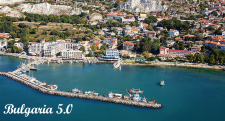Austronesian Origin Stories: The Polynesians
The pre-colonial Polynesians, who are Austronesian, revered a supreme deity who, according to the story, huddled in an egg-shaped shell for countless ages in endless space. After an infinite period of impenetrable darkness, the god hatched himself.
Upon beholding a void, he was inspired to create the heavens and the earth and all the other gods. This deity also brought forth the seas and the islands. Once land was formed, the creator of the universe sent a vine to earth, and from the worms clinging to this vine humans developed.
The Samoans called this god Tagaloa, the Tongans called him Tangaloa, the Māori of New Zealand called him Tangaroa, the Tahitians called him Ta’aroa, and the Hawaiians called him Kanaloa.
What is most interesting about this story from a linguistic point of view is that the name for this god could well serve comparative philologists in telling another origin story, that of the Austronesian languages. The various names for the supreme deity in these five Pacific languages – Samoan, Tongan, Māori, Tahitian, and Hawaiian – can start the process of reconstructing Proto-Austronesian.

In this chapter we explore in more depth the methods of comparative philology (historical linguistics), and we summarize the fruits of this philological labor that has established the major language stocks, identified the diverse homelands where the protolanguages were likely spoken, and catalogued their major structural features.
We also engage with another group of scientists interested in origin stories, namely population geneticists who seek to establish the genetic relationships among the world’s populations. Whereas comparative philology has been around for well over two hundred years, population genetics is hardly more than fifty years old. However, the latter has made great progress, especially since the Human Genome Project finished mapping the complete human genome in 2003.
It is exciting to discover the places where the results of these two independent disciplines – comparative philology and population genetics – coincide to indicate places where the genetic make-up of certain populations and the languages they speak separate and diverge. These places of coincidence are the topic of this chapter for they tell us the story of the spread of the peoples and their languages across the globe during the last 10,000 years.
See also: Languages in the World Blogs
Cover Photo Credit: fr:Utilisateur:FRED, Wikimedia User. Authorized for under this Creative Commons license:
Note: Speaking of origins, we make the following etymologic notes: auster is Latin for ‘south wind’ and this root is found in Australia, Austroasiatic, and Austronesia. Nesos is the ancient Greek word for ‘island’, poly is the ancient Greek word for ‘many’, and melos is the ancient Greek word for ‘dark’. Thus, Austronesia is ‘south islands’, Polynesia is ‘many islands’, and Melanesia is ‘dark islands’, the last referring to the inhabitants’ skin color. This root ‘dark’ is also found in melanin, melatonin, melanoma, etc.
From Chapter Seven A Mobile History: Mapping Language Stocks and Families. Languages in the World. How History, Culture, and Politics Shape Language. (affiliate) Julie Tetel Andresen and Phillip Carter. November, 2015. Wiley-Blackwell.
Categorised in: Adventure, Language, Oceania
This post was written by Julie Tetel Andresen
You may also like these stories:
- google+
- comment




